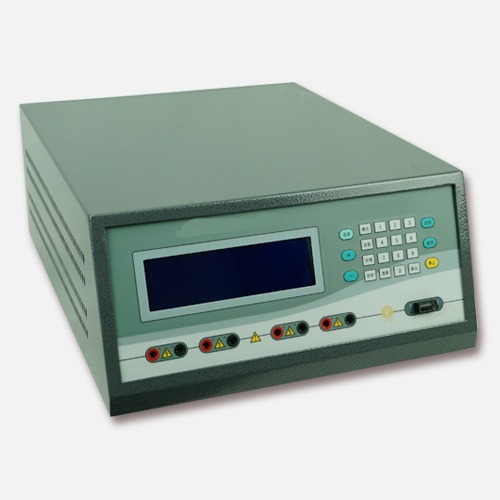Introduction: What is Electrophoresis?
Electrophoresis is a powerful laboratory technique used to separate molecules like DNA, RNA, and proteins based on their size and charge. Through the application of an electric field, these molecules move through a gel matrix, making electrophoresis essential in scientific research, medical diagnostics, and even forensic analysis. The technique is used to visualize, analyze, and differentiate biological molecules, making it foundational to fields like genetics and molecular biology.
Key Concept:
- Electrophoresis: The process of separating charged molecules in a gel using an electric current(Biology Dictionary)(Microbe Online).
- Importance: Essential for DNA analysis, protein research, and even crime scene investigations.
1. How Does Electrophoresis Work?
The Science Behind Electrophoresis
Electrophoresis operates on the principle that molecules with a charge will migrate when placed in an electric field. Depending on their charge and size, different molecules will move at varying speeds through the gel. For instance, smaller DNA fragments will move faster than larger ones(Biology Dictionary).
| Property | Movement Speed in Gel |
|---|---|
| Smaller Molecules | Faster through the gel matrix |
| Larger Molecules | Slower, due to more resistance |
| Negatively Charged | Toward the positive electrode |
This method allows researchers to distinguish molecules by size and charge and visualize them through dye or UV illumination(Save My Exams).
Types of Gels Used
- Agarose Gel: Commonly used for separating DNA and RNA molecules(Microbe Online).
- Polyacrylamide Gel: Often used in SDS-PAGE, ideal for protein separation(Microbe Online).
Example: Gel Electrophoresis in DNA Analysis
- A typical DNA gel electrophoresis setup uses agarose gel, which acts like a sieve, slowing down larger DNA fragments and allowing smaller fragments to travel faster(Save My Exams).
2. Types of Electrophoresis and Their Applications
DNA and RNA Electrophoresis
One of the primary uses of electrophoresis is in analyzing DNA and RNA. Through gel electrophoresis, DNA fragments are separated and visualized, helping researchers in genetic profiling, PCR product analysis, and forensic identification.
Comparison of DNA vs. Protein Electrophoresis:
| DNA Electrophoresis | Protein Electrophoresis (SDS-PAGE) |
|---|---|
| Uses agarose gel | Uses polyacrylamide gel |
| Primarily used for DNA/RNA separation | Used to separate proteins by molecular weight(Microbe Online) |
| Common in genetic and forensic analysis | Common in studying protein structure and function(Save My Exams) |
Capillary Electrophoresis
Capillary electrophoresis is an advanced form that utilizes tiny capillary tubes, providing higher resolution for separating smaller quantities of molecules. It's widely used in pharmaceutical industries and environmental testing due to its precision(Microbe Online).
Applications:
- Genetic Testing: Identifying mutations, sequencing DNA.
- Forensics: Crime scene DNA analysis.
- Pharmaceuticals: Quality control and purity testing(Save My Exams).
3. Frequently Asked Questions About Electrophoresis
What Are the Key Steps in Gel Electrophoresis?
- Sample Preparation: DNA or proteins are extracted and prepped using PCR or digestion.
- Gel Preparation: Agarose or polyacrylamide gels are made, and samples are loaded into wells.
- Application of Electric Field: The gel is placed in an electrophoresis chamber, and an electric current is applied.
- Visualization: After running the gel, DNA or proteins are stained to make them visible under UV light or through dyes(Biology Dictionary).
What is the Difference Between Agarose and Polyacrylamide Gels?
- Agarose Gel: Ideal for larger molecules like DNA and RNA. Pores are bigger, making it perfect for analyzing longer fragments(Save My Exams).
- Polyacrylamide Gel: Used for smaller molecules like proteins. It provides a tighter mesh, allowing separation based on slight size differences(Microbe Online).
How Are Electrophoresis Results Interpreted?
The results are interpreted by comparing the distance traveled by the molecules to a molecular weight ladder, a set of standards that allow researchers to determine the size of unknown molecules(Save My Exams).
| Molecule Type | Expected Gel Band Movement |
|---|---|
| Small DNA (100-500 bp) | Moves fast, appears near the bottom of the gel. |
| Large DNA (1-5 kb) | Moves slower, bands appear near the top. |
4. Real-World Applications of Electrophoresis
Forensics
Electrophoresis is often used to match DNA samples found at crime scenes with suspects. It helps distinguish between individual DNA profiles based on the size and pattern of DNA fragments(Save My Exams).
Case Example:
In forensic labs, DNA samples from crime scenes are analyzed using gel electrophoresis to create a DNA profile. This profile can then be compared with suspects to determine matches or exclusions, making the technique invaluable in criminal investigations(Microbe Online).
Medical Diagnostics
In clinical settings, electrophoresis can diagnose diseases such as multiple sclerosis or detect abnormalities in proteins. Protein electrophoresis separates serum proteins to identify irregularities in protein structures(Microbe Online)(Save My Exams).
Agriculture and Food Science
Electrophoresis is also used in detecting genetically modified organisms (GMOs) in agriculture, ensuring food safety and quality standards. This technique identifies genetic markers indicating whether a plant or animal has undergone genetic modification(Microbe Online).
Conclusion
Electrophoresis remains an essential tool across a wide range of disciplines, from genetics to food science. It offers scientists the ability to separate and study molecules with precision, enabling critical discoveries in medical research, diagnostics, and beyond.
Whether you're a researcher seeking to analyze genetic material or simply curious about how science can solve crimes or diagnose diseases, electrophoresis is one technique that continues to have a significant impact on our understanding of biology.
→Click here to learn more about our Electrophoresis equipment
or
Additional Resources:
- Further Reading: NCBI - Electrophoresis Techniques
- Electrophoresis in Practice: Check out detailed protocols and research papers on platforms like PubMed for in-depth studies(ProProfs).

